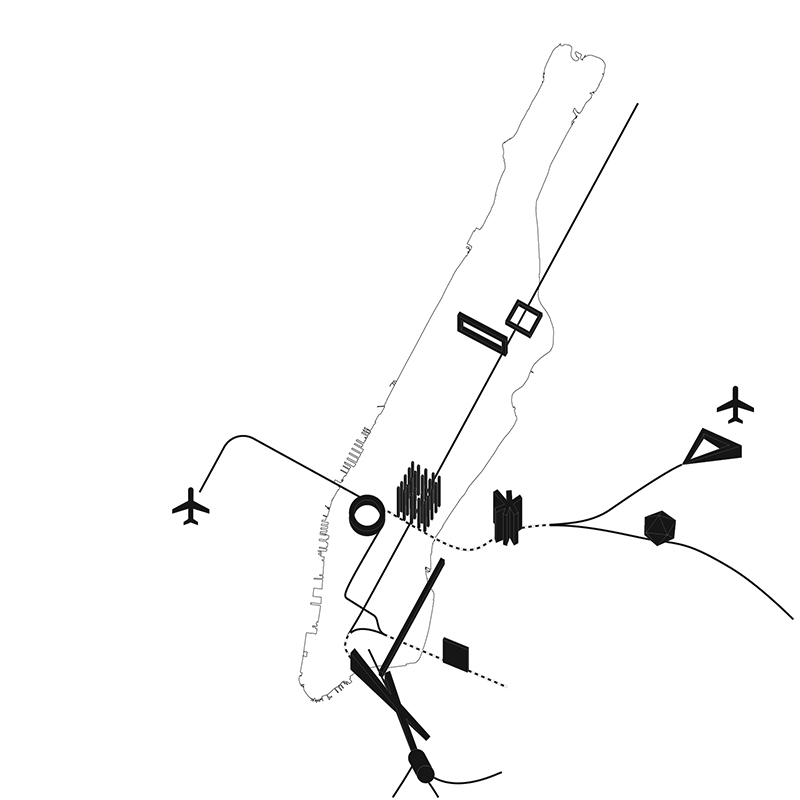Cut City
Cut City envisions New York City with the urban conditions of an Asian metropolis such as Hong Kong. This transposition is partially intended as a didactic tool; what can the West learn from the breathtaking urbanization of Asia over the past 50 years? For instance, at the density of Kowloon, the entire population of Manhattan could fit within a new footprint to achieve greater efficiency, consolidate infrastructure, and anticipate a changing climate. Cut City speculates on how certain Hong Kong and Asian densities, conditions, and typologies might be deployed within New York City.
Cut City refers to both a technique of transposition and a possible outcome of selective deletion and consolidation of urban intensity, and in this sense is intended to be a provocative critique of the current political discourse and planning efforts in the United States. Cut City is intended as an unsolicited masterplan, an adaptation to a different future economic and environmental climate, and a projection of new conceptual and urban boundaries.
Subtraction
At the density of Kowloon, the entire population of Manhattan could fit within a new footprint to achieve greater efficiency, consolidate infrastructure, or anticipate a changing climate.
Intensification
Abstract volumes are deployed to represent new densities. They are intended to follow the Hong Kong model, centering on existing infrastructure such as subway and train hubs, airports, parks, and bridges. The volumes are positioned in relation to deletions but also potential capacities. They could be considered as either individual mega-structures, or envelopes for future development.

Midtown Special Economic Zone
A grid of pencil towers—a uniquely Hong Kong typology—is deployed over an area of the city with the greatest unused transportation capacity. The existing zoning restrictions are lifted, while light and air at grade is preserved through the slenderness and spacing of new towers.

Penn Hub
A loop of building substance, on top of Penn Station, creates a new hub amidst the Garment District. Not unlike Hong Kong’s IFC, the development could be related to (and support) the high-speed airport linkages.

Project Information
| Type | Research, Exhibition |
|---|---|
| Location | UABB Bi-City Biennale for Urbanism/Architecture Shenzhen, China |
| Status | Completed, 2013 |
| Team | Adam Frampton, Hugh Magee, Ryan Peeters, Jon Siani |





